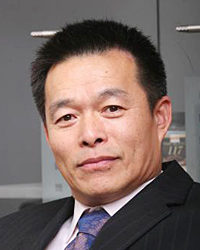| China is one of the few countries that formulate a plan pertaining to economic and social development every five years. From ideas to implementation, creating a five-year plan involves many great minds. It's a complicated, sometimes drawn out process with thorough procedures—and it should be, since each plan plots the course China will take in its social and economic development over the next five years. Professor Hu Angang, Director of the Center for China Study of Tsinghua University, who took part in drawing up the 11th Five-Year Plan (2006-10) and is participating in the ongoing drafting process of the new one, explained the procedures involved in shaping the 12th Five-Year Plan (2011-15) in an exclusive interview with Beijing Review reporters Lan Xinzhen and Yu Shujun.
Ten steps

The first step in making the 12th Five-Year Plan was a mid-term review of the 11th Five-Year Plan.
In the second half of 2008, the National Development and Reform Commission (NDRC) entrusted the Center for China Study of Tsinghua University, the Development Research Center of the State Council and the World Bank Office, Beijing with the review work. Each of the three then wrote an independent report.
At the end of December 2008, the NDRC reported the three organizations' findings and the results of an opinion poll conducted by the State Information Center and the National Bureau of Statistics to the State Council.
The mid-term review report of Tsinghua University's Center for China Study says: Economic growth targets were attained in advance; social development progressed smoothly; improvements were made to address resource and environmental issues, but challenges and problems remain; and economic restructuring still lags. But overall, the implementation has run smoothly.
The second step was conducted at the end of 2008. The NDRC selected more than 20 issues covering hot topics of social and economic development and major concerns of people, such as policies on attracting foreign investment and income distribution, and then organized experts, scholars and entrepreneurs to brainstorm.
Thousands of political and economic experts worked together for an entire year to research the following questions: What is the guideline of the 12th Five-Year Plan? How will China's economy and society develop during the 12th Five-Year Plan period (2011-15)? It's the largest policy consulting and research activity conducted anywhere in the world.
The third step was putting forward the guideline for the plan. Earlier this year, top leaders' speeches on several occasions revealed that the 12th Five-Year Plan would focus on changing the economic development model.
The fourth step is making the consultative draft for the plan. This step is currently ongoing. Various ideas and suggestions will be collected and put into the consultative draft.
A special expert committee, consisting of more than 50 members, will then deliberate on the consultative draft and advise the drafting team several times. The expert committee (which Hu is a member of), established in October 2005, is devoted to making the country's economic and social development plans. The process is often conducted through debating and opinion gathering.
The fifth step will be the discussion of the consultative draft at the Fifth Plenary Session of the 17th Central Committee of the Communist Party of China this October. More opinions and advice will be collected at the meeting.
Drafting the plan is the sixth step. Based on the discussions and suggestions, a draft plan will be completed by the start of 2011.
The expert committee will discuss details of the draft in January 2011, which is the seventh step. Meanwhile, the eighth step will be for Premier Wen Jiabao to collect opinions from all social circles from January to February.
In March 2011, the draft will be submitted to the annual session of the National People's Congress for deliberation. That's the ninth step.
If the draft is approved by the National People's Congress, the State Council will promulgate and then implement the plan.
The whole process of making the 12th Five-Year Plan reflects the Central Government's strategic decisions as well as local governments' desire for economic growth and social development—and all these different interests, desires and opinions will converge to form a consensus about China's future.
The process is a proof that China has formed its own democratic, institutionalized procedures for public decision-making.
The importance
China has made five-year plans since 1953 and witnessed a fast growth of 9.2 percent in the First Five-Year Plan period (1953-57). The plans were suspended for political reasons for several years and resumed in 1981 with the Sixth Five-Year Plan. The full name for the plan was also changed from Five-Year Plan for National Economy to Five-Year Plan for National Economic and Social Development in 1981.
Since then, the five-year plans have become a comprehensive and guiding roadmap for national economic and social development, and a strategic blueprint for the modernization with Chinese characteristics. The Chinese economy has maintained high growth rates, in part, thanks to the five-year plans.
But China is not alone in achieving fast economic growth by implementing five-year plans. Of the world's top 20 countries that enjoyed the fastest economic growth between 1980-2005, 13 had implemented five-year or four-year plans. Of the top 10, eight had five-year plans.
After the financial crisis, only three of the G20 countries, namely, China, India and Indonesia, have seen economic growth—and all three have five-year plans in action. In my opinion, five-year plans have helped create China's economic miracle.
In the post-crisis era, the 12th Five-Year Plan will play a vital role in China's political, economic and social development. The 12th Five-Year Plan is a result of China's largest public decision-making event. Well understanding of the plan is pertinent to the comprehension of China's development roadmap for the next five years. | 